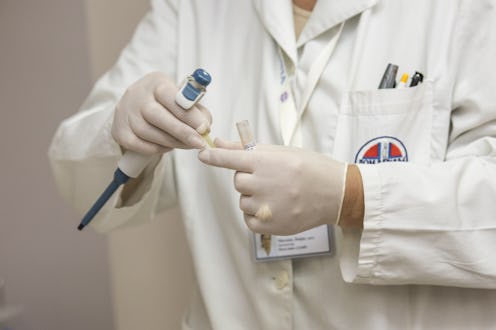News
Should I Donate Blood, Platelets, Or Plasma?

The topic of blood donation — who can donate, why, and more — is circulating on social media and in the news due to the horrific act of violence that struck an Orlando nightclub Sunday. It's an important conversation, but like many other aspects of that awful day, it leaves the public with many questions. For instance, what's the difference between donating blood, platelets, and plasma? June 14 is World Blood Donor Day, an initiative set up by the World Health Organization to encourage voluntary blood donations. The theme of this year's World Blood Donor Day is "Blood Connects Us All." It's important to remember that giving blood could save a life.
It's difficult to take action in a helpful way if you are uninformed, no matter how much you want to be of service to your fellow humans. Donating blood is a great way to do just that, but it is important to do a little research before you choose the way in which you will help. Learning about how you can donate and which type of donation is the best fit for you is a solid place to start. Here is your quick reference guide to help you make a decision that might save lives.
Is There A Difference Between Donating Blood, Platelets, Or Plasma?
Yes. According to the American Red Cross, there are restrictions on each type of donation based on blood type, physical characteristics, and other factors specific to the donation. Each utilizes a specific part of the blood you give, and these are referred to in clinical terms as "transferable units."
Donating Whole Blood
This is the most common type of donation. The donor gives one pint of blood, typically, which is then separated into transfusable components, including red cells, plasma, and platelets. You are able to donate blood every 56 days, and the entire process takes about one hour from start to finish, with only about eight to 10 minutes spent on the actual "filling up the bag with your blood" part.
Donating Via Platelet Apheresis
Platelets are harvested by an apheresis machine, which extracts them along with some plasma. The machine returns the red blood cells and most of that plasma back to the donor during the procedure. One donation of platelets can provide the same amount of transfusable units that it would take four to six donations of whole blood to produce. Platelets are an integral part of treatments for cancer and organ transplant. The American Red Cross collects platelets only at select locations, so inquire at your nearest clinic to make sure they do. Platelet donation takes about one-and-one half to two hours, total.
Donating Via Plasma Apheresis
Plasma is collected while undergoing platelet apheresis. It's a similar procedure to platelet donation, though in plasma collection, the red blood cells and platelets are returned to the donor, while the clinic keeps the plasma. Donors with the A/B blood type are the universal plasma donors, much like the O+ blood type is for red blood cells. Donation of plasma is a process that lasts about one hour and 15 minutes. Plasma apheresis is performed at select American Red Cross locations.
It's important to note that the best type of donation you can give varies by individual, so talk to your doctor or the Red Cross to see how you can be most of use.
Images: Pixabay